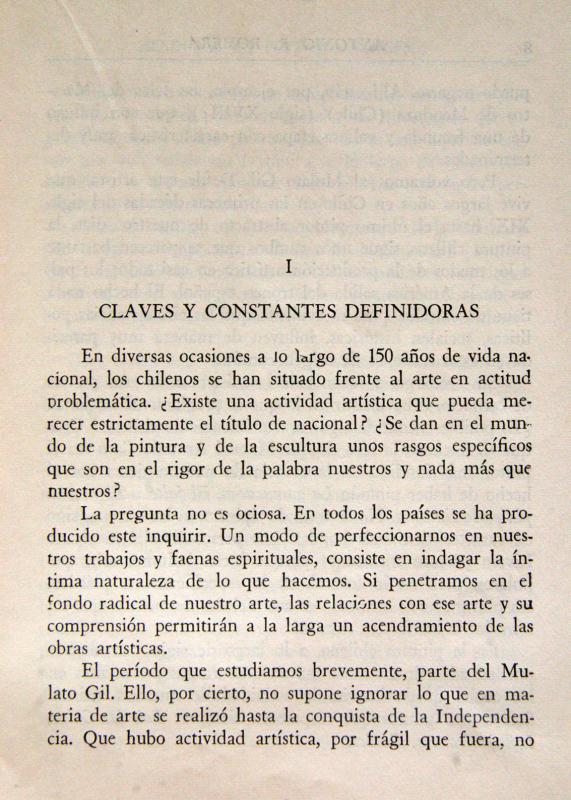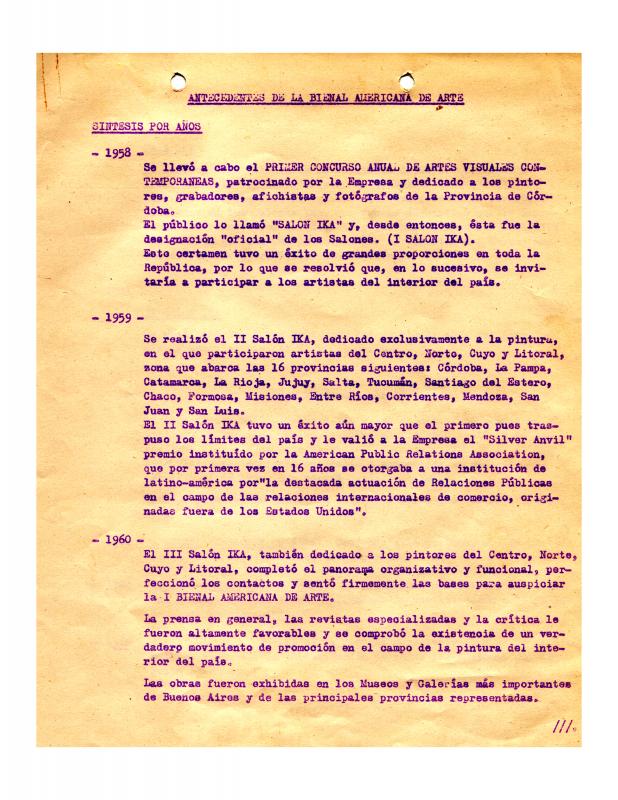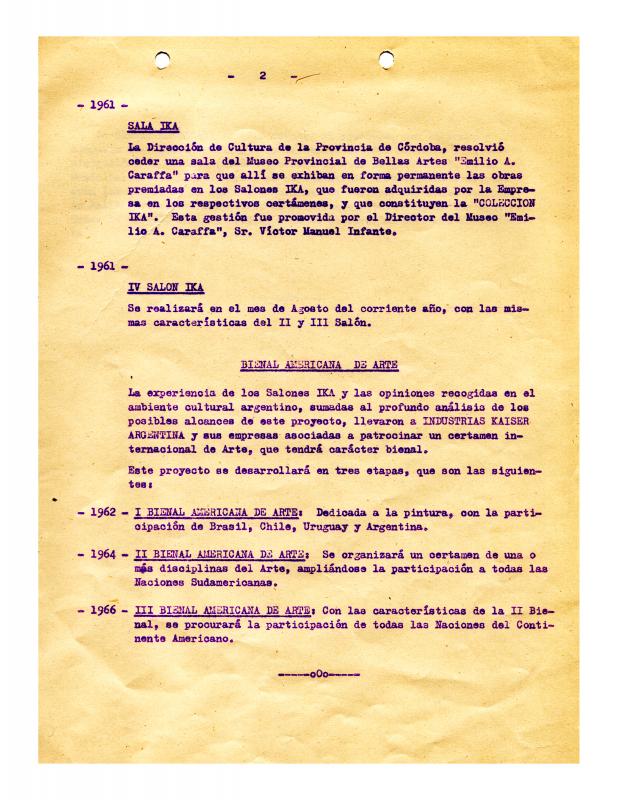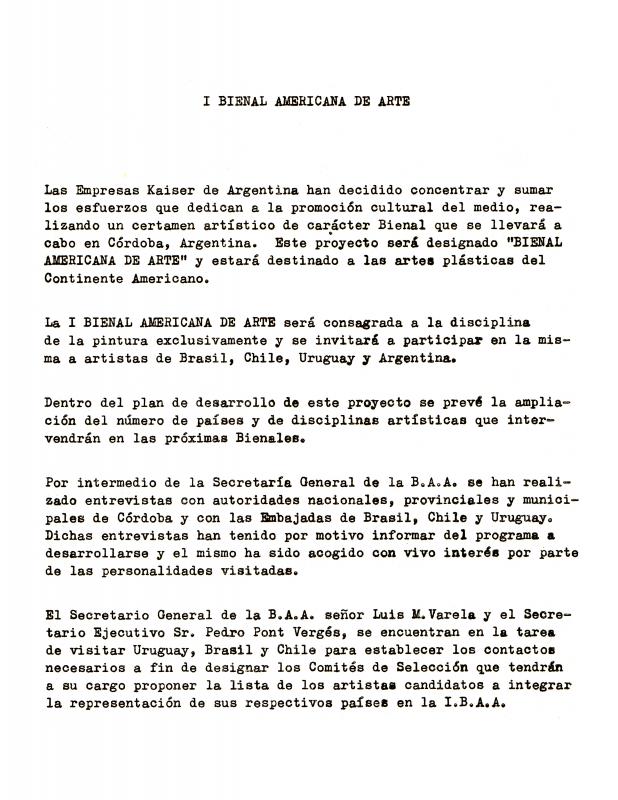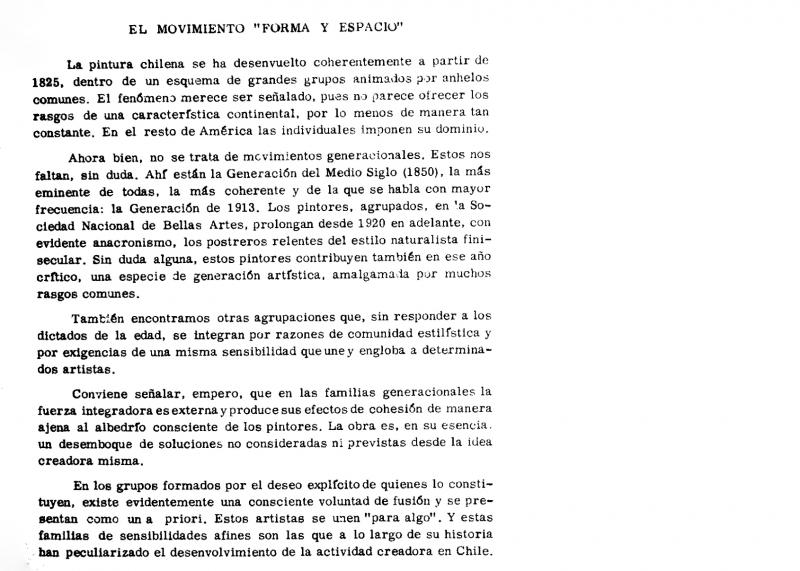In this critical text, the art historian Antonio Romera (1908–1975) talks about the Chilean contribution to the Primera Bienal Americana de Arte, held in Córdoba, Argentina, in 1962. Wearing both a critic’s and a curator’s hat, Romera contextualizes the Chilean works included in the submission and expresses his disagreement with the selection. The curator of the Chilean collection was the art historian Víctor Carvacho (1916–1996). [To learn more about the work of both artists, see the following in the ICAA Digital Archive: “Claves y constantes definidoras” (doc. no. 754547) by Romera and “Esquema de cincuenta años de la Plástica Chilena” (doc. no. 748419) by Carvacho.]
The Bienal Americana de Arte (BAA), also known as the “Bienales de Córdoba,” was a continuation of the Salón IKA, an event organized by Industrias Kaiser Argentina (IKA); the first edition of this exhibition took place at the Museo Caraffa in 1958 and was focused on painting. Brazil, Uruguay, Argentina, and Chile took part in the first Salon. [On this subject, see: “Antecedentes de la Bienal Americana de Arte” (doc. no. 777743), “Bienal americana de arte” (doc. no. 777759), “I Bienal Americana de Arte” (doc. no. 770633), and “Jurado de premios” (doc. no. 770706).] In this latest version of the BAA, Chile was represented by Nemesio Antúnez (1918–1993), José Balmes (1927–2016), Ernesto Barreda (1927–2015), Gracia Barrios (1927–2020), Eduardo [Martínez] Bonati (b. 1929), Roser Bru (1923–2021), Pablo Burchard (1875–1964), Juan Downey (1940–1993), Jaime González, Camilo Mori (1896–1973), Carlos Ortúzar (1935–1985), and Alberto Pérez (1926–1999). That same year, the painters Balmes, Barrios, Pérez, and Martínez Bonati started the Grupo Signo, a collective committed to modernizing Chilean art in the second half of the twentieth century; this was followed by Informalist painting movements that were focused on political transformation at a global level. [For more about the collective, see “Presencia del Signo” (doc. no. 751514) by Alberto Pérez.] Romera questioned the absence of geometric abstraction, whose major exponent in Chile was Forma y Espacio, a movement headed by Ramón Vergara Grez (1923–2012). [See the text by Romera “El movimiento forma y espacio” (doc. no. 749831), published in the catalogue that was issued to commemorate the group’s sixteenth anniversary.]

